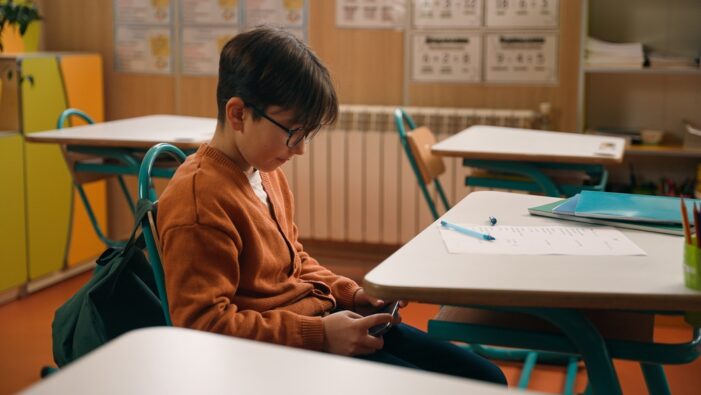By: Janet Howard
With the 2025–26 school year underway, New York State has launched the nation’s most ambitious bell‑to‑bell smartphone ban in K–12 schools—eliminating distractions and restoring focus to classrooms statewide. This historic Distraction-Free Schools law marks a turning point in American education. Supporters say these phone-free schools help students refocus on academics and wellbeing.
A Vision for Focused Learning
Governor Kathy Hochul has framed the shift as deeply personal: “Our kids are overwhelmed by the addictive algorithms and endless distractions. Ninety‑five percent of teenagers have smartphones. They receive 250 notifications a day on average. … We’ll have no cellphones in a child’s hand from the moment they enter school until they leave. No more memes instead of math … I want our kids to make eye to eye contact again … I want them to enjoy the experience of real human connection, not just through a screen.” She has championed the New York smartphone ban as a model for the nation.
This initiative aims to reconnect students with each other—and with real learning.
How the Policy Works
The Distraction‑Free Schools law, enacted in New York’s FY 2026 state budget, prohibits the unsanctioned use of internet-enabled devices—including smartphones, smartwatches, and tablets—during the school day, from “bell to bell,” encompassing classroom time, lunch, recess, and passing periods.
Key features include:
– Flexible Implementation: Schools design device storage plans—like lockers or pouches—that suit their settings.
– $13.5 Million in Funding: Allocated to help schools purchase storage solutions.
– Mandatory Stakeholder Input: Teachers, parents, and students must be consulted when crafting local policies, with annual public reporting to prevent inequitable disciplinary practices.
– Essential Exemptions: Devices may be allowed for medical needs, IEP requirements, translations, or emergencies.
Leadership That Delivered Results
Governor Hochul highlighted New York’s milestone: “New York was the first state to target addictive social media feeds — and now we’re the largest state to restrict smartphones in schools throughout the entire school day.”
She stressed the urgency after years of public input: “Let’s recognize the fact that all across America, a war is being waged for our children’s minds. … These young people, they’re calling for help, and as the adults in the room … it’s our job to pick up that call.”
At a roundtable in Spencerport, she warned parents of the challenge ahead: “This is going to be a huge transition for your children, enormous,” … “If you’re a smoker one day and the next day you don’t have a pack of cigarettes, that’s a rough time for you.”
Resources for Schools and Districts
To assist districts, the state launched a Distraction‑Free Schools portal featuring policy FAQs, toolkits, model templates, and implementation deadlines. By mid‑August 2025, the site displayed published plans from over 1,050 school districts, accounting for approximately 96% of the schools required to comply.
Growing Public Support
According to a Pew Research Center survey, support for all‑day cellphone bans in schools is rising—now at 44%, up from 36% last fall. General bans during class time receive 74% support across political and age groups.
Governor Hochul echoed this momentum: “As Governor, my priority is ensuring every New York student receives a high‑quality education, free from constant clicking and scrolling – that’s why I’ve directed my team to commit every available resource for school districts to develop their distraction‑free learning policies by the August 1 deadline.”
Why It Matters
– Improved Learning and Engagement: Schools free from screen-time distractions can prioritize teaching, instill focus, and foster genuine connections.
– Mental Health Benefits: With fewer in-school social pressures and online comparisons, students may experience reduced anxiety.
– Equity and Transparency: Local input and public reporting guard against bias, ensuring fair enforcement.
Final Thoughts
New York’s Distraction‑Free Schools law is a landmark in national education policy: bold, data-informed, and rooted in human connection over convenience. With thoughtful implementation and continued oversight, this initiative can reshape learning environments—making classrooms places of genuine engagement once more.

